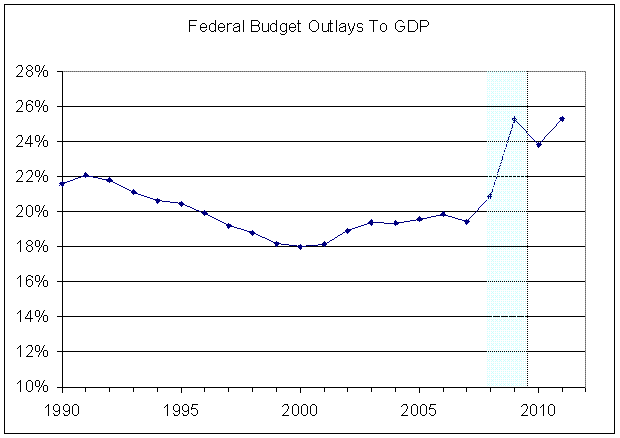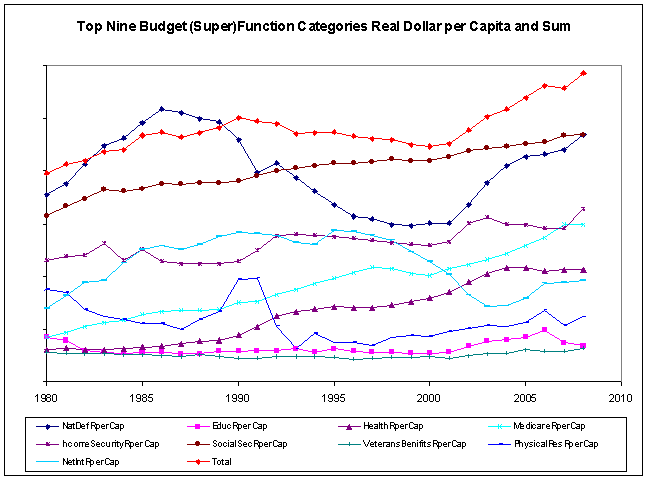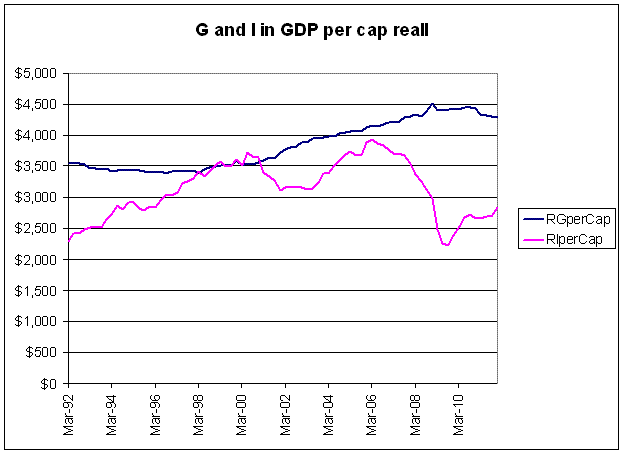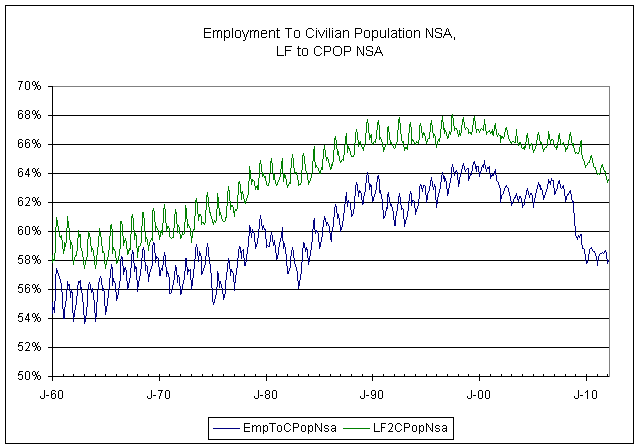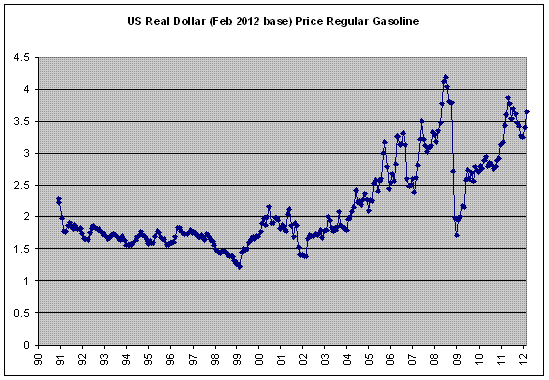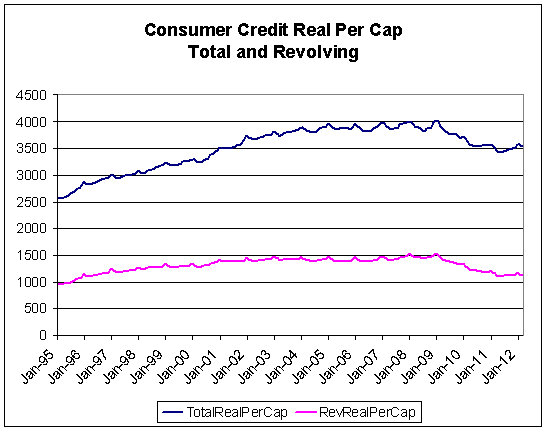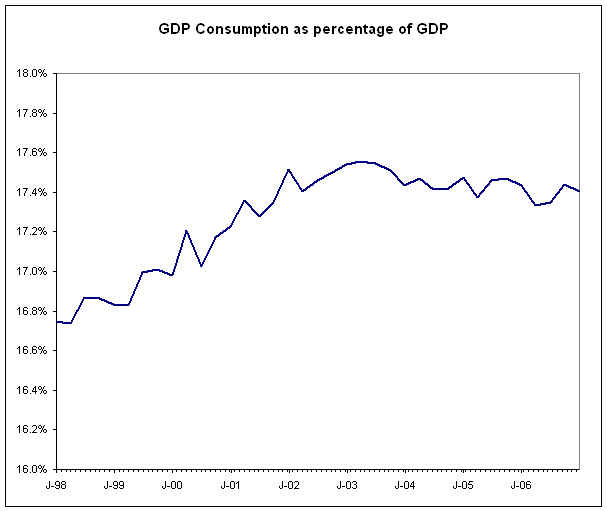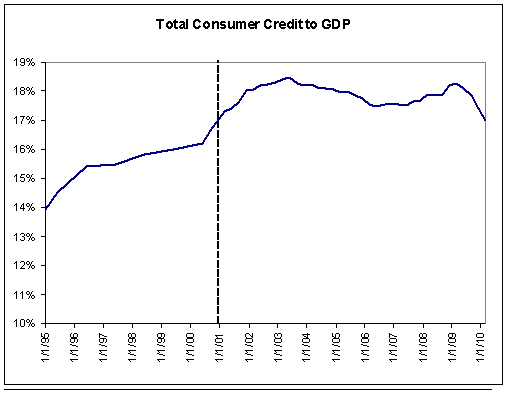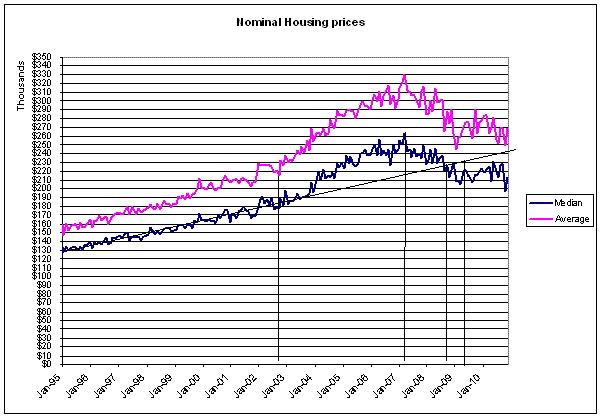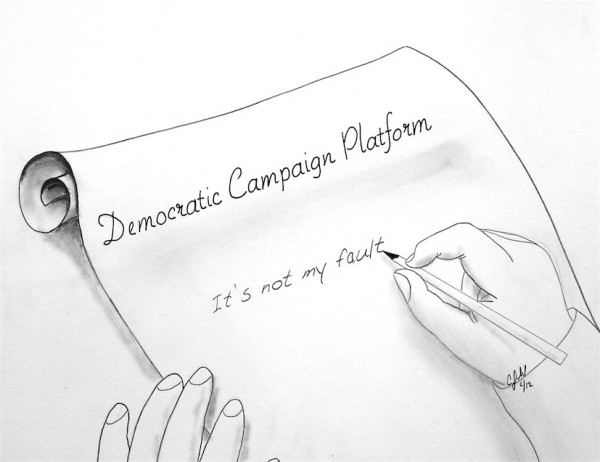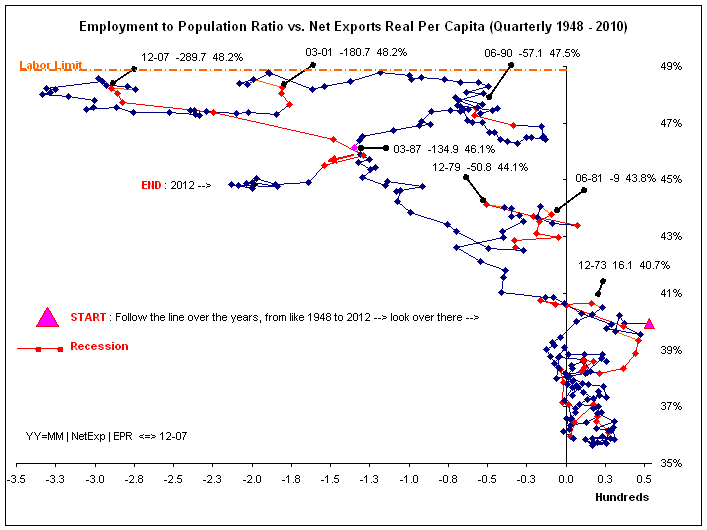itfitzme
VIP Member
Some where in the thread was the same old "Reagan fixed the economy by lowering taxes" b.s. And while I agree that lowering taxes likely has the effect of stimulating the economy, so does increased government spending.
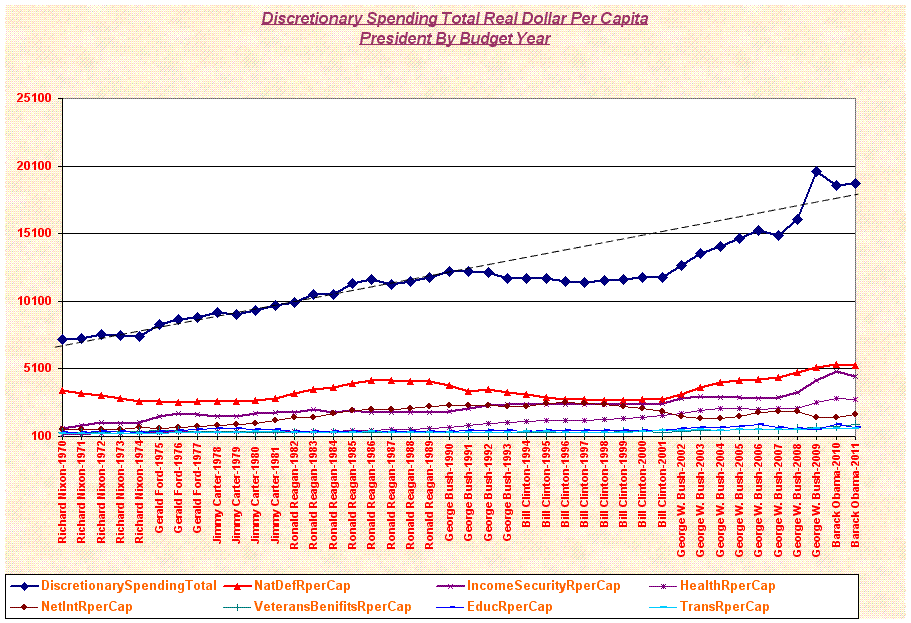
And what you will notice here is that the Reagan admin, along with every president except Bush I and Clinton, increased government discretionary spending.
Anyone with any logical sense knows that if you change two factor simultaneously, you cannot claim that one was a causal effect and that the other wasn't.
The thing I find so damn fascinating is that Bush II and Obama have had to return spending back to the trend that existed before Bush I and Clinton cut spending.
The thing is that there are indications that the economy was headed down hill in 2001 and that the Great Recession was simply put off by the housing boom. Whether this was caused by Bush I and Clinton isn't exactly clear, though some MMT guys suggest that the "recession" of 2000-01 was caused by it.
When the gov't continuously lowers taxes and continuously increases spending, it is essentially a continuous Keynesian stimulation by tax and spending multipliers. A single instance of one has an impulse effect that dies off. If the government continues to do it again and again, the impulses overlap and the economy is continuously stimulated.
Problem is, it wasn't working very will since 2001 because both the labor force participation rate and employment continued to decline from that point.
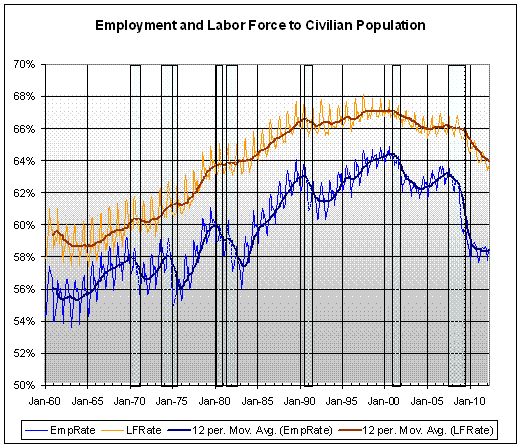

And what you will notice here is that the Reagan admin, along with every president except Bush I and Clinton, increased government discretionary spending.
Anyone with any logical sense knows that if you change two factor simultaneously, you cannot claim that one was a causal effect and that the other wasn't.
The thing I find so damn fascinating is that Bush II and Obama have had to return spending back to the trend that existed before Bush I and Clinton cut spending.
The thing is that there are indications that the economy was headed down hill in 2001 and that the Great Recession was simply put off by the housing boom. Whether this was caused by Bush I and Clinton isn't exactly clear, though some MMT guys suggest that the "recession" of 2000-01 was caused by it.
When the gov't continuously lowers taxes and continuously increases spending, it is essentially a continuous Keynesian stimulation by tax and spending multipliers. A single instance of one has an impulse effect that dies off. If the government continues to do it again and again, the impulses overlap and the economy is continuously stimulated.
Problem is, it wasn't working very will since 2001 because both the labor force participation rate and employment continued to decline from that point.


